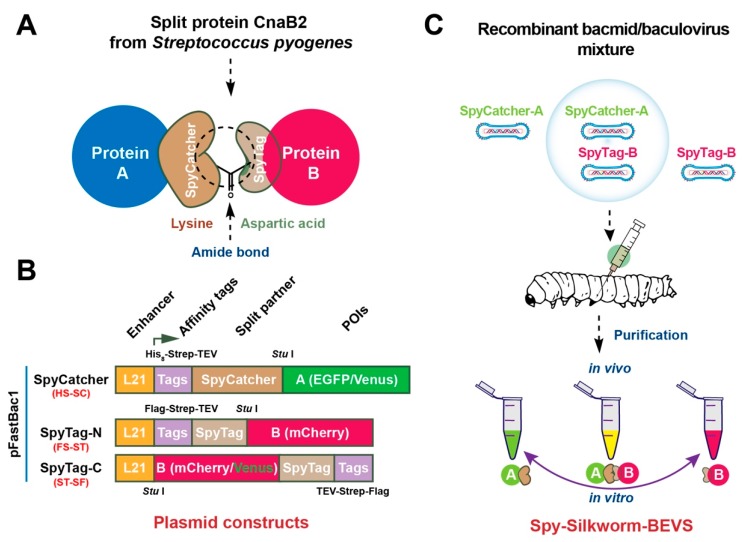Figure 1.
Schematic design of SpyTag/SpyCatcher-Bacmid/Baculovirus expression vector system (SpyBEVS). (A) Lysin-Aspartic acid amide bond formation between SpyTag/SpyCatcher-fused (ST/SC) partners. (B) Expression (pFastBac1) constructions of SpyCatcher and SpyTag (N/C-terminus). L21, a 5′ untranslated leader sequence (21 bp) from a lobster tropomyosin cDNA as an enhancer to improve the protein expression level in BEVS [31]; His8, 8 × histidine tag; Strep, Strep-tag; TEV, a recognition site of TEV protease; FLAG, DYKDDDDK-tag. GGGS linker is presented between each tag to increase the plasticity of whole proteins. As shown, enhanced green fluorescent protein (EGFP), Venus, or mCherry proteins were employed as model proteins for each construct to be investigated in the ligation assay. (C) The experimental flow of Spy-Silkworm-BEVS using silkworm instar larvae. Recombinant baculoviruses containing ST/SC-fused proteins of interest were generated by Bac-to-Bac system. The silkworm 5th instar larvae were then injected with single or mixed recombinant bacmids or recombinant baculoviruses to produce ST/SC-fused proteins for in vitro (after protein purification) and in vivo (co-expression in silkworm via co-infection methods) ligation, respectively.

